The Hindu mythology is littered with the stories that would last us a lifetime or two.
And some of them are more well-known than others. The soil of the great Gods and Goddesses, our history cracks under the stories we possess.
The ten incarnations of Lord Vishnu have been talked about extensively.
Who is Lord Narsimha?
Believed to incarnate as different characters in our earth during dire times of need to purge the world of evil and restore balance, Lord Vishnu is part of the Holy Trinity made up of Lord Shiva and Lord Brahma.
And to stop the reign of evil and save the people from it, Lord Vishnu took the Narasimha avatar.
Believed to have been the fourth avatar taken by Lord Vishnu, the avatar of Narasimha is believed to have been one of his most ferocious ones.
With the body of a human and the head of a beast, a lion, the Narasimha avatar is portrayed in a visceral and terrifying way.
This avatar of Lord Vishnu was majorly denoted to protect his devotee, young prince Prahaladha, from his demon father, Hiranyakashipu.
Brass Standing Lord Vishnu Murti (6 Inch) Brass Narayana/Vishnu Lakshmi on Ananta-Sajya (5.5 Inch)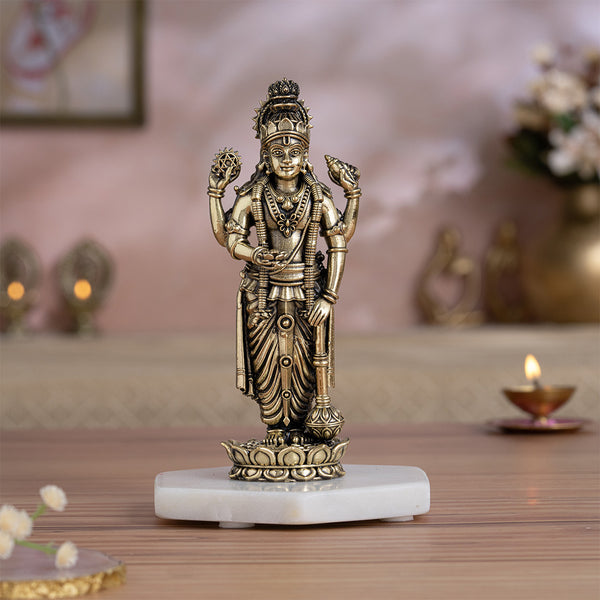
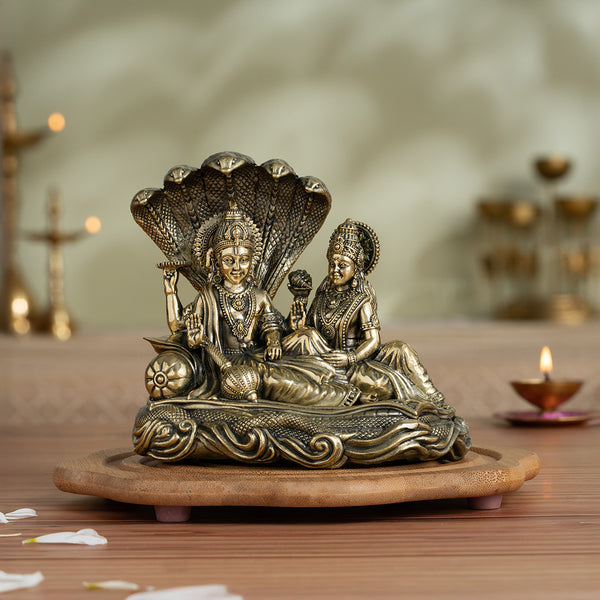
Birth Details of Narasimha Avatar
Tithi & Month: Appeared on Chaturdashi tithi (14th lunar day) of Shukla Paksha in the Vaishakha month (April–May).
Time of Appearance: Manifested during twilight (Sandhya Kāla), a time that is neither day nor night.
Divine Manifestation: Lord Narasimha did not take birth through a womb; He manifested instantly from a pillar in King Hiranyakashipu’s court.
Symbolic Conditions: His appearance fulfilled the unique conditions of Hiranyakashipu’s boon :-
• Not by man or beast
• Not inside or outside
• Not by weapon
• Not during day or night
Occasion Celebrated As: This divine event is celebrated as Narasimha Jayanti, marking the victory of good over evil and the protection of true devotion.
The Legend of Hiranyakashipu's Rise to Power
During the age of Satya Yuga, it is said that the Sage Kashyap and his wife Diti had two sons named Hiranyaksha and Hiranyakashipu.
The brothers were known for their destructive nature, carrying the will to create chaos anyplace they go. They spared no one, troubling both humans and devas.
Hiranyakashipu wanted to rule over the three worlds: heaven, earth, and the underworld. And he knew just the way to attain it.
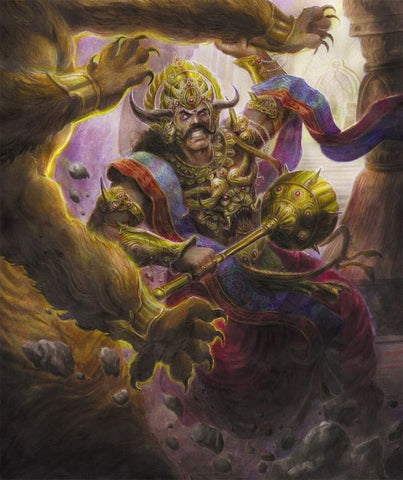
Hiranyakashipu began his journey by delving into a deep penance. Ones that vyed the ones undertaken by great saints and sages.
True to his devotion, it is said that he meditated for so long that plants grew on him.
Owing to his relentless devotion, Lord Brahma appears in front of him.
The Creator of the Universe grants him a boon, and Hiranyakashipu, seizing this opportunity, asks to be made immortal.
However, Lord Brahma refuses, saying that it's one boon no one can grant him.
Therefore, Hiranyakashipu asks for a boon that grants him near invincibility where he asks to not be killed by a man or a beast, neither in the day or the night nor inside or outside, and that no weapon could harm him.
With his newfound strength, Hiranyakashipu unleashed a reign of terror, forcing everyone to worship only him as a god, ruthlessly suppressing any reverence for other deities.
His cruelty and tyranny spared no one who dared to defy his will.
Prahlada - Devotion Personified
My first introduction to the story of Prahaladha was from the Amar Chitra Katha I owned.
The story of young Prahaladha and his utter devotion to Lord Vishnu is a story all of us have heard about.
Born to the demon king Hiranyakashipu, who, upon attaining a boon of invincibility from Lord Brahma, sought to be worshipped as a god.
He was an ardent hater of Lord Vishnu and, in his terror, forbade anyone from praying to Lord Vishnu.
However, ironically, from a very young age, Prahlada, Hiranyakashipu’s son, displayed a deep and sincere love for Lord Vishnu.
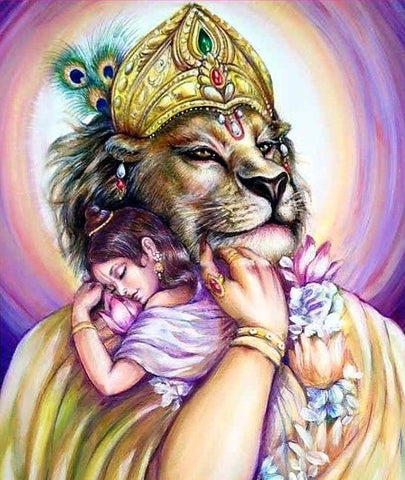
While the other children played, he meditated and chanted Lord Vishnu's name.
Prahlada devotion was a constant presence around him, making Hiranyakashipu increasingly mad. He was determined to turn Prahaladha from his faith in Lord Vishnu.
Hiranyakashipu tried various means to put an end to Prahlada's devotion, from poisonous snakes to throwing him off cliffs, but nothing could shake the young boy's faith.
And this is especially cruel since young Prahaladha was a little boy with an ardent devotion to Lord Vishnu.
Prahlada continued to pray to Lord Vishnu with all his heart. His devotion touched the heavens, and Lord Vishnu himself came down to his rescue.
However, due to the boon that Hiranyakashipu had, Lord Vishnu emerged as Narasimha, a half-man, half-lion, and defeated Hiranyakashipu, putting an end to his tyrannical rule.
Hiranyakashipu's Boon and Its Limitations
As a result of his penance, Lord Brahma appears before Hiranyakashipu to grant him a boon.
Hiranyakashipu aspired to wield dominion over the three worlds - heaven, earth, and the underworld.
His journey to power began with relentless devotion, which caught the attention of Lord Brahma, the universe's creator.
In response to his devotion, Brahma granted him a potent boon, making him nearly invincible. However, Hiranyakashipu's arrogance led him to demand immortality, a wish Brahma refused.
With his newfound strength, Hiranyakashipu unleashed a reign of terror, forcing everyone to worship only him as a god, ruthlessly suppressing any reverence for other deities.
His cruelty and tyranny spared no one who dared to defy his will.
This powerful boon from one of the powerful deities, Lord Brahma, the creator of the universe, seemed like a ticket to invincibility, however, this boon had a critical loophole.
Lord Brahma granted him the wish for immortality but with specific conditions.
Hiranyakashipu could not be killed during the day or night, indoors or outdoors, by man or beast, using any weapon, and not on land, water, or in the air.
This made him seemingly indestructible, as there was no circumstance that met all these conditions at once.
Yet, this was what left him vulnerable. When Lord Vishnu took the form of Narasimha, a half-man, half-lion, he emerged at twilight (neither day nor night), placed Hiranyakashipu on his lap (neither land nor air), and using his claws (neither man nor beast), he defeated the demon king.
Significance and Impact of the Narasimha Avatar
More than the belief that truth always triumphs, as a child, what stood out the most to me about the story is that God is always just and powerful and heeding.
Despite the penance that Hiranyakashipu undertook and receiving a boon that is supposed to make him as good as immortal, he ultimately faces his downfall.
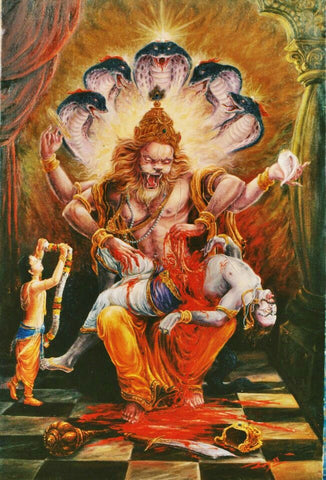
Lord Vishnu’s Narasimha avatar proves this and that he would always protect dharma and appear before those in need.
The story starts with Hiranyakashipu attaining power and wielding it to make all three worlds under his control and worship him.
However, as fate would have it, the one person he could not get echoing his wishes was his only son, who remained a devotee of Lord Vishnu.
Though Hiranyakashipu increasingly turns to violent means of getting his son to turn and later almost kills him, Hiranyakashipu fails.
In an attempt to end Prahlada's devotion, Hiranyakashipu challenged him to show where his god resided.
To this, Prahlada calmly pointed to a pillar, indicating that Vishnu was everywhere.
Enraged, Hiranyakashipu strikes the pillar with his mace, and out emerged Narasimha, with a lion's head and a human body.
Narasimha grabbed Hiranyakashipu and carried him to the threshold, which was neither indoors nor outdoors, and placed him on his lap, which wasn't land, water, or air.
As twilight approached, a time that met neither day nor night, Narasimha's sharp claws, which were neither man nor beast, tore apart Hiranyakashipu.
In his final moments, Hiranyakashipu realized that Lord Vishnu's avatar managed to kill him without breaking any of the demands of his boon.
Narasimha's wrathful form upheld dharma and protected Prahlada, emphasizing the idea that when evil threatens, the divine will always find a way to restore balance and protect those who have faith.
Narasimha Iconography, Worship and Teachings
Narasimha is a unique incarnation of Lord Vishnu with a lion's head and human body and is often depicted with a fearsome appearance in Hindu scriptures.
Methods of Worshiping Narasimha for Courage and Strength
Like several other deities, Narasimha avatar of Lord Vishnu is worshipped by chanting prayers and performing rituals.
This avatar in particular is prayed to for strength and courage. He is also worshipped when one wants to overcome their fear and hardship.
Celebration of Narasimha Jayanti
The day when Narasimha came down to Earth, is celebrated as Narasimha Jayanti. It falls on the 14th day of the bright half of the lunar month, typically in May.
Lessons on Devotion, Faith in God's Grace, Good vs. Evil
The battle between good versus evil has been eternal. And it is always truth that wins eventually.
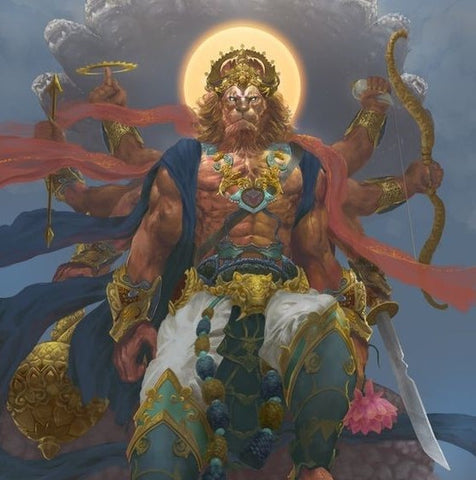
The avatar of Narasimha was taken to rid the world of evil and bring peace and happiness once again.
It shows us that the Gods are always watching and would help us when in need.
Relevance of Narasimha's Teachings in Modern Times
In today's world, we often have to deal with difficult problems and make choices about what's right and wrong.
Narasimha's story can help us with that. It shows us that even when things are really tough, we can be brave and keep moving forward by believing in something bigger than ourselves.
Narasimha also reminds us that doing the right thing is important, and that good can always win over bad.
So, if you ever need strength or hope, Narasimha's teachings can give you a helping hand and show you the way to a better future.
Lord Vishnu Standing Antique Idol (12 Inch) Lord Vishnu & Maa Lakshmi Standing Antique Murti Set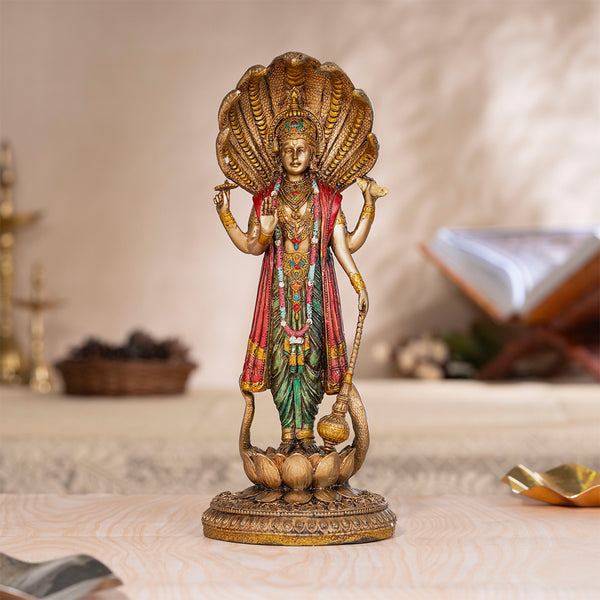
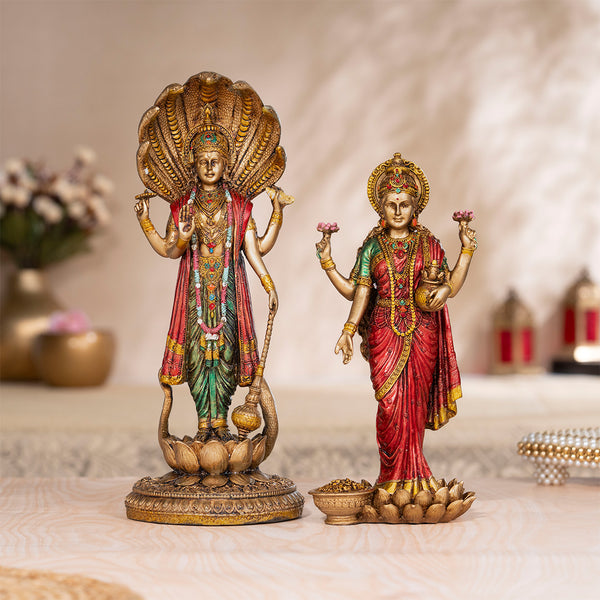
Conclusion
The chaos caused by Hiranyakashipu and the torture he put his son through could not go on any longer.
The troubled gods sought the help of Lord Vishnu to put an end to this monstrosity. They wanted the worlds at peace.
Lord Vishnu as the Preserver of the Universe would not send his devotees away. And true to his nature as the Preserver of the Universe, Lord Vishnu took the form of Narasimha, shown as a half beast and half man in order to save Prahaladha and the three worlds.
This avatar of Lord Vishnu is considered as one of his several interludes to uphold dharma, and make the good win over the bad.
It is also highly symbolic. When Hiranyakashipu breaks the pillar asking if God is residing in it, Narasimha emerges proving that God is indeed omnipresent, always watching over us.
This story tells us to do what's right, even when things are tough. It reminds us to trust in something greater when life gets really hard, and it gives us hope that good can win over bad.
So, Narasimha's story is like a guiding star for many people. It gives them faith and strength as they go through life's ups and downs. It's a story that never gets old and keeps inspiring us to be brave and stay hopeful.
FAQs on Mahavatar Narasimha
1) Who is Mahavatar Narasimha in the movie?
The movie Mahavatar Narasimha explores the divine avatar of Lord Vishnu who appeared as half-man, half-lion to protect his devotee Prahlada. This form represents the triumph of dharma over adharma.
2) Is the Mahavatar Narasimha movie based on real Hindu scriptures?
Yes, the story of Lord Narasimha is found in ancient Hindu scriptures like the Bhagavata Purana and Vishnu Purana. The film is inspired by these sacred texts.
3) What is the meaning of Mahavatar in Mahavatar Narasimha?
‘Mahavatar’ means a great incarnation of the Divine. In this context, Lord Narasimha is revered as a powerful and protective form of Vishnu.
4) What is the significance of Lord Narasimha’s appearance from a pillar?
This miraculous event represents how the divine can manifest anywhere and at any time to protect truth and destroy evil.
5) Are there temples dedicated to Lord Narasimha in India?
Yes, major temples like Ahobilam in Andhra Pradesh and Simhachalam are dedicated to Lord Narasimha.
6) What day is Narasimha Jayanti celebrated?
Narasimha Jayanti falls on the 14th day of the Shukla Paksha in the month of Vaishakha (April–May), marking his divine appearance.
7) What mantras are chanted for Narasimha?
Common mantras include the powerful "Ugram Veeram Maha Vishnum" and the Narasimha Kavacham for protection.






